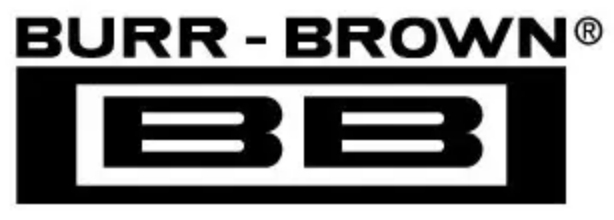OFFSET TRIMMING
The INA114 is laser trimmed for very low offset voltage and
drift. Most applications require no external offset adjust-
ment. Figure 2 shows an optional circuit for trimming the
output offset voltage. The voltage applied to Ref terminal is
summed at the output. Low impedance must be maintained
at this node to assure good common-mode rejection. This is
achieved by buffering trim voltage with an op amp as
shown.
–
V
IN
R
G
V
IN
+
INA114
Ref
Microphone,
Hydrophone
etc.
INA114
47kΩ
47kΩ
Thermocouple
INA114
V
O
V+
100µA
1/2 REF200
10kΩ
OPA177
±10mV
Adjustment Range
10kΩ
100Ω
INA114
100Ω
100µA
1/2 REF200
V–
Center-tap provides
bias current return.
FIGURE 3. Providing an Input Common-Mode Current Path.
A combination of common-mode and differential input
signals can cause the output of A
1
or A
2
to saturate. Figure
4 shows the output voltage swing of A
1
and A
2
expressed in
terms of a common-mode and differential input voltages.
Output swing capability of these internal amplifiers is the
same as the output amplifier, A
3
. For applications where
input common-mode range must be maximized, limit the
output voltage swing by connecting the INA114 in a lower
gain (see performance curve “Input Common-Mode Voltage
Range vs Output Voltage”). If necessary, add gain after the
INA114 to increase the voltage swing.
Input-overload often produces an output voltage that appears
normal. For example, an input voltage of +20V on one input
and +40V on the other input will obviously exceed the linear
common-mode range of both input amplifiers. Since both
input amplifiers are saturated to nearly the same output
voltage limit, the difference voltage measured by the output
amplifier will be near zero. The output of the INA114 will
be near 0V even though both inputs are overloaded.
INPUT PROTECTION
The inputs of the INA114 are individually protected for
voltages up to
±40V.
For example, a condition of –40V on
one input and +40V on the other input will not cause
damage. Internal circuitry on each input provides low series
impedance under normal signal conditions. To provide
equivalent protection, series input resistors would contribute
excessive noise. If the input is overloaded, the protection
circuitry limits the input current to a safe value (approxi-
mately 1.5mA). The typical performance curve “Input Bias
Current vs Common-Mode Input Voltage” shows this input
FIGURE 2. Optional Trimming of Output Offset Voltage.
INPUT BIAS CURRENT RETURN PATH
The input impedance of the INA114 is extremely high—
approximately 10
10
Ω.
However, a path must be provided for
the input bias current of both inputs. This input bias current
is typically less than
±1nA
(it can be either polarity due to
cancellation circuitry). High input impedance means that
this input bias current changes very little with varying input
voltage.
Input circuitry must provide a path for this input bias current
if the INA114 is to operate properly. Figure 3 shows various
provisions for an input bias current path. Without a bias
current return path, the inputs will float to a potential which
exceeds the common-mode range of the INA114 and the
input amplifiers will saturate. If the differential source resis-
tance is low, bias current return path can be connected to one
input (see thermocouple example in Figure 3). With higher
source impedance, using two resistors provides a balanced
input with possible advantages of lower input offset voltage
due to bias current and better common-mode rejection.
INPUT COMMON-MODE RANGE
The linear common-mode range of the input op amps of the
INA114 is approximately
±13.75V
(or 1.25V from the
power supplies). As the output voltage increases, however,
the linear input range will be limited by the output voltage
swing of the input amplifiers, A
1
and A
2
. The common-
mode range is related to the output voltage of the complete
amplifier—see performance curve “Input Common-Mode
Range vs Output Voltage.”
®
9
INA114

 BURR-BROWN [ BURR-BROWN CORPORATION ]
BURR-BROWN [ BURR-BROWN CORPORATION ]